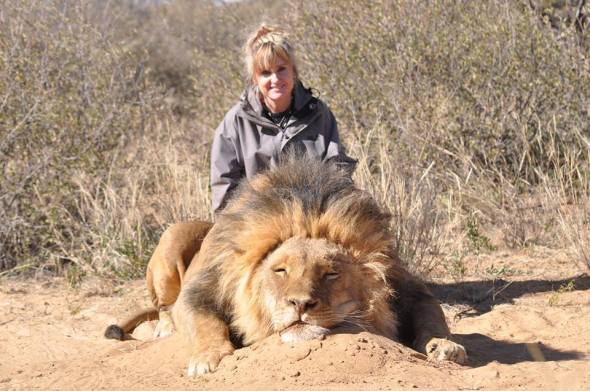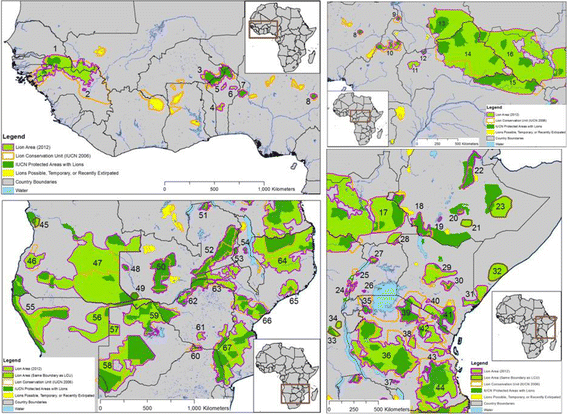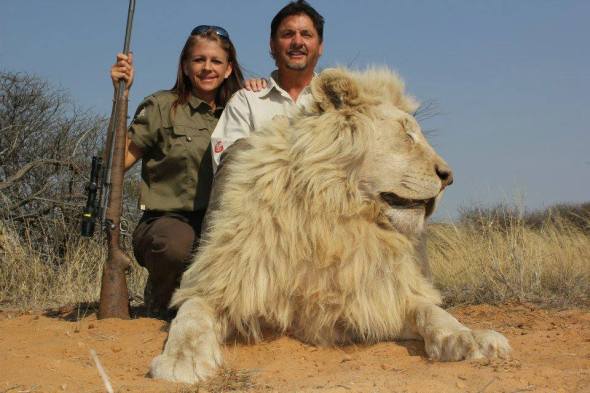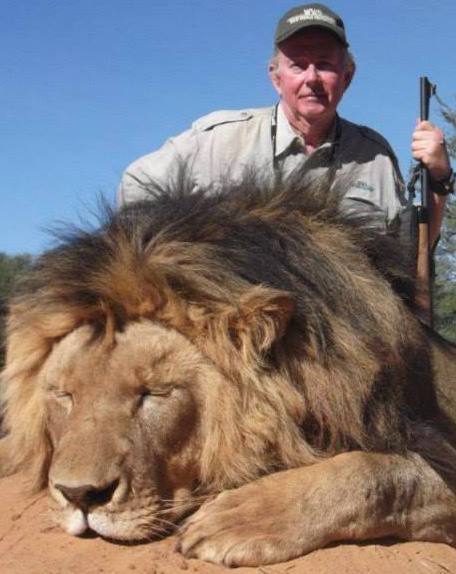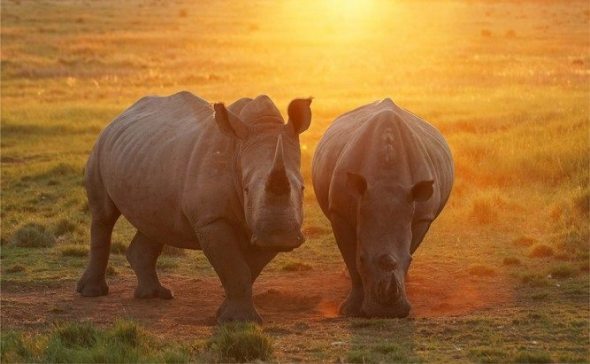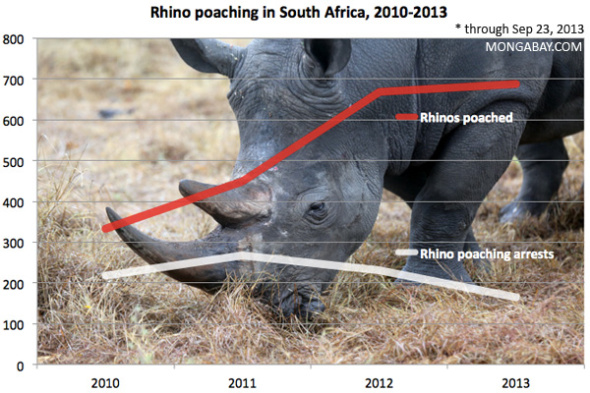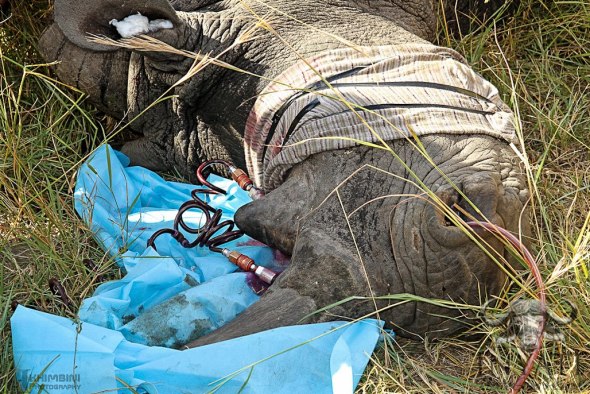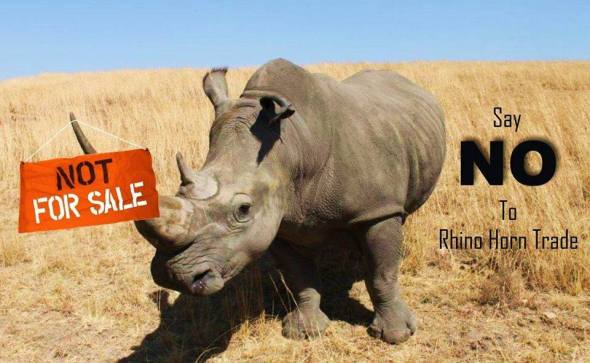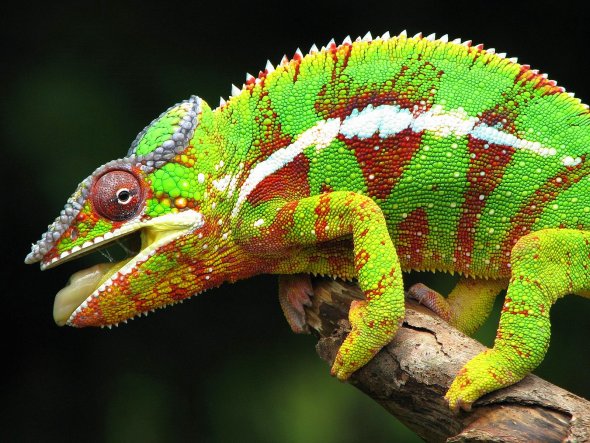Lion Hunting - The BIG Debate.
Lion populations are diminishing and still hunting organisations are taking no responsibility for such vast decreasing trends that have pushed many conservation organisations to now take direct action into preserving the last of the Panthera species.
The west African Lion is virtually extinct with only a mere thirty five left roaming the wild grasses and savanna’s. Will we see them pushed into extinction by the middle of next year. Regrettably more than likely.
Lion populations have decreased in the last century from a staggering 400,000 individuals to only 40,000 left within the African wild. Demand for hunting trophies, such as Lion skin rugs, and a thriving trade in animal parts in the US and across the globe have raised the threat levels for African Lions, which are already under assault because of conflicts with local villagers and shrinking habitat. Hunters deny this though still quoting and documenting outdated facts and information to confuse many Animal Rights Activists and general concerned public gauged from their subscription to hunting units - they actually believe the woven propaganda that hunting big guns preach - of course we know why such preaching is big on the agenda - money and lots of it.
The king of the jungle is heading toward extinction, and yet Americans continue to kill Lions for sport. Americans being the largest players in this game that have swamped my African land by the bloody plane loads just to slaughter, very little conserving. Canned hunting or wild hunting if its a Lion the American hunting citizen will net it at any cost. Detailing their nauseating “sport” online and within hunting porn magazines.
Picture above - Adele Jansen van Rensberg - Lion and big game hunter.
Adele Jansen van Rensberg’s hunting fiend (one of many) quoted the following to our main environmental unit
“I totally support you, Adele van Rensberg, and congratulate you on this beautiful male lion. It’s such a shame that the haters don’t take the trouble to learn the facts, and merely allow themselves to be controlled by their ill-informed emotions. They select what they want to believe and refuse to listen to the truth … which is that it is only thanks to the animal management that is paid for by hunting, that any of these animals survive in the wild. Were it not for the millions of dollars poured into conservation by hunting, these animals would be extinct through illegal poaching and removal for human safety reasons. Hunting pays for fences to protect cattle, for relocation to protect humans, for wardens and rangers to fight poaching, for equipment and staffing, and for special reserves for breeding and reintroduction. So, no matter how ironical the antis may think this picture, we know that for every one [old, nuisance or condemned] lion that is legally shot, multiple lions are saved. Well done, lady, keep up the good work
The number of wild African Lions has fallen sharply in the last 100 years. A century ago, as many as 200,000 roamed across Africa. Now, by some estimates, fewer than 40,000 remain in the wild; other organisations put the figure for survivors at 23,000, and they have vanished from 80% of the areas where they once roamed. Lions have become extinct in 26 countries. Only seven countries – Botswana, Ethiopia, Kenya, South Africa, Tanzania, Zambia and Zimbabwe – are believed to contain more than 1,000 Lions each. One thousand Lions in each habituating nation (not exactly over populated is it?) and when one views hunters both men and women - even children taking such large quotas it worries myself more now than it did today when another thousand suddenly disappear.
The single biggest threat by far to the animals’ survival is humans, though not necessarily western hunters. It is just the very, very widespread killing of Lions, mostly in a conflict situation, by anyone who is trying to farm livestock in Africa and finds it very difficult to co-exist with Lions. There is also a lot of pressure on lion habitats with wilderness areas shrinking to build roads – such as the controversial highway across the Serengeti – or to make room for agriculture.
But the report by the wildlife coalition, filed with the White House said western hunters were a growing danger to the Lions’ survival. Between 1999 and 2008, 64% of the 5,663 Lions that were killed in the African wild for sport ended up being shipped to America, it said. It also said the numbers had risen sharply in those 10 years, with more than twice as many Lions taken as trophies by US hunters in 2008 than in 1999. In addition to personal trophies, Americans are also the world’s biggest buyers of lion carcasses and body parts, including claws, skulls, bones and penises. In the same years, the US imported 63% of the 2,715 Lion specimens put up for sale. American hunters are fueling the trade in pseudo Tiger bone wine too - selling Lion bones and carcasses to Asia to produce fake Tiger bone wine thus continuing the trade in endangered species, and illegal poaching of Lions and Tigers, for the want of more.
For some countries, including Tanzania, Zambia, Namibia and Mozambique, hunting for sport was the main threat to the Lions’ existence. But even in countries which did not attract large numbers of tourists on hunting trips, the practice was taking a growing toll. Conservationists noted that hunters’ penchant for bagging a male lion risked wiping out entire prides. The loss of the alpha male could set off a struggle for supremacy among the survivors that could lead to further deaths of adult male Lions, or male cubs seen as potential threats.
International Animal Rescue Foundation Africa and other conservationists are calling time now on this trade and want a hunting moratorium implemented sooner rather than later that would reduce that threat by taking Americans out of the game. It’s one of a range of threats to the survival of the species. But what is most certainly true is that of all the threats to the African lion, the one we can best address here in this country is their import.”
It was noted that all of the other big cats are protected – Jaguars, Leopards and Tigers. African Lions are the only ones left out there. However, other wildlife experts argued that a total hunting ban was a “nuclear option”. They said responsible hunting could in some cases help conserve populations by maintaining wilderness areas. Existing US and international regulations, such as the Cites conventions against trafficking in endangered species, could also be reinforced to protect Lions, they said. If you remove hunting, the very real risk is that you force African governments to generate revenue from that land and the obvious thing is cattle and crops which just wipe out habitats said one Hunter. We cannot just sit back though and do nothing. We have to try and preserve our species and if we fail we try and retry again.
We define African savannahs as being those areas that receive between 300 and 1,500 mm of rain annually. This broad definition encompasses a variety of habitats. Thus defined, savannahs comprise 13.5 million km2 and encompass most of the present range of the African Lion (Panthera leo). Dense human populations and extensive conversion of land to human use preclude use by Lions. Using high-resolution satellite imagery and human population density data we define lion areas, places that likely have resident Lion populations. In 1960, 11.9 million km2 of these savannahs had fewer than 25 people per km2. The comparable area shrank to 9.7 million km2 by 2000.
Areas of savannah Africa with few people have shrunk considerably in the last 50 years and human population projections suggest they will likely shrink significantly in the next 40. The current extent of free-ranging Lion populations is 3.4 million km2 or about 25 % of savannah area. Habitats across this area are fragmented; all available data indicate that between 32,000 and 35,000 free-ranging Lions live in 67 Lion areas. Although these numbers are similar to previous estimates, they are geographically more comprehensive. There is abundant evidence of widespread declines and local extinctions. Under the criteria we outline, ten Lion areas qualify as lion strongholds: four in East Africa and six in Southern Africa. Approximately 24,000 Lions are in strongholds, with an additional 4,000 in potential ones. However, over 6,000 Lions are in populations of doubtful long-term viability. Lion populations in West and Central Africa are acutely threatened with many recent, local extinctions even in nominally protected areas.
In Africa, Lion populations once lived outside this strict savannah zone. For example, until recently a Lion population was present in forest-savannah mosaics in Gabon and the Republic of Congo (“Congo-Brazzaville”) (Henschel 2009), and there are other remnant populations in forests in Ethiopia and other non-savannah environments. However, the association between Lions and savannahs is generally now quite a close one. How much of the African savannah still supports Lions—and is likely to do so in the future—are the more difficult questions we are addressing.
We evaluate the state of the African savannah with two objectives, namely estimating the areas of savannah still suitable for Lion populations and estimating the Lion populations themselves within these areas. If areas retain Lions, the continent’s top predator, they are likely to be reasonably intact ecosystems. By considering the size of savannah Africa from the Lion’s perspective, we can assess how much of it remains in large, relatively intact areas, not yet heavily modified by human influence. Clearly, smaller areas will still support less complete sets of species.
Current Lion populations based on many assessments are as follows for the continent of Mama Africa;
The assessments are based on Chardonnet, Bauer and Van Der Merwe, IUCN, and present review and source reports
- West - Chardonnet - 1,213 - Bauer and Van Der Merwe -701 - IUCN - 1,640 - Present -480
- Central - Chardonnet - 2,765 - Bauer and Van Der Merwe - 860 - IUCN - 2,410 - Present - 2,419
- East - Chardonnet - 20,485 - Bauer and Van Der Merwe - 11,167 - IUCN - 17,290 - Present - 19,972
- South - Chardonnet - 13,482 - Bauer and Van Der Merwe - 9,415 - IUCN - 11,820 - Present - 12,036
Total
- Chardonnet = 37,945
- Bauer and Van Der Merwe = 22,143
- IUCN = 33,160
- Present = 34,970
- Present review but no SCI or IGF funded reports = 32,260
The Biodiversity and Conservation Report in brief estimate the following Lion populations as shown below;
Lion bones are a sought-after ingredient used to make lion bone wine, a substitute for the traditional Asian cure-all,tiger bone wine, which fetches up to R250 000 a case at illicit auctions.
Conservationists have warned that captive breeding and canned hunting programmes in South Africa are providing a source for the lion bone trade. Canned lion hunting is legal in South Africa, as is the exporting of lion carcasses. Lion populations across Africa have been reduced by 90% over the past 50 years, but lion breeders say their operations have nothing to do with the continent’s wild populations.
Typically Hon Edna Molewa didn’t respond to any of the information listed hereto - but then does she ever respond to issues such as Rhino conservation? No- she sides with hunters and pro-trade lobbyists instead.
Breeders can benefit financially a number of times from the same lion. Cubs are often rented as tourist attractions and visitors pay to pet and interact with them. The fee paid by visitors is then fed back into captive breeding programmes. As adults, the lions are sold to hunters in canned hunting arrangements.
Farmers and hunting operators charge in the region of about $20 000 (R160 000) as a “trophy price” and hunters can expect to pay around $18 000 (R145 000) for other services, excluding taxidermy. But the hunters are only interested in the head and skin of the lion, and often leave the bones with the breeder, who can then sell the bones, with a government permit, to Asian buyers for use in making lion bone wine.
It’s estimated that a complete lion skeleton can sell for as much as R80 000. Last year it emerged that over 1 400 lion and leopard trophies were exported from the country in 2009 and 2010. According to the environmental affairs minister, in 2010, 153 live lions were exported as well as 46 lion skins, 235 carcasses, 592 trophies, 43 bodies and 41 skulls. It was noted that these figures were incomplete as the provinces had not yet captured all their data. Yet there was a 150% growth in exports of lion products from 2009 and 2010.
Amplifying an illegal industry
Chris Mercer, director of the Campaign Against Canned Hunting, said hunting captive-bred lions was “hideously damaging” to conservation. “It’s farming with alternative livestock. They’re only doing it because they make more money farming lions than they do sheep or cattle. But they don’t realise they’re harming the wild populations by creating and amplifying an illegal industry and allowing it to prosper,” he said.
Mercer said he believes the export of lion bones and in fact the entire canned hunting industry should be banned. He pointed out that there was a huge overlap between the rhino horn and lion bone trade. “Many of the Asiatic groups dealing with lion bones are the same people dealing with rhino horn,” he said. He criticised government for taking a simplistic view of the matter and overlooking the dangers the lion bone trade poses. “The very people who are doing our rhino horn [poaching] are making money out of this. You can just imagine how the illegal trade is going to piggy-back itself onto this legal trade,” he warned.
Banning the entire trade will be difficult. There are almost 200 lion breeders in the country, many of whom are part of the powerful Predator Breeders’ lobby group. The breeding of lions for trophy hunting is a lucrative business. In 2009, the economic value of trophy hunting was estimated to be between R153-million and R832-million.
Rapidly going extinct
But Pieter Kat, director of the UK-based conservation organisation LionAid, said a lot could be achieved simply by placing a ban on the export of lion bones. Lions are listed on appendix two of the Convention on International Trade in Endangered Species of Wild Fauna and Flora, which means that a government permit is needed to export any lion products. “It will take a position of responsibility by South Africa to say, ‘No more, we will not allow this,'” he said.
“South Africa is within its rights [to] say no more export permits,” said Kat.
Kat said that while one could argue about the ethics of breeding lions just to be shot, it was important to bear in mind that whatever South Africa did in terms of its legal trade in lion bones would affect wild lion populations all over the continent. Kat pointed out that there are only about 20 000 lions left on the entire continent – down from about 200 000 in the 1970s. In the past few years Côte d’Ivoire, Ghana and the Republic of Congo-Brazzaville have lost all their lions, while countries like Nigeria, Malawi and Senegal have only a few dozen lions left.
“We’re dealing with a species that is rapidly going extinct but because we are not really focused on lions – we’re talking about elephants and rhinos – it’s a silent extinction,” he said. He warned that allowing the trade in lion bones to proliferate would stimulate a demand for the product. “Soon someone will [realise] it’s cheaper for to poach than to pay the owner of a captive animal to get the bones,” he said.
Breeding for exploitation is only human
But Professor Pieter Potgieter, chairperson of the South African Predator Breeders’ Association, defended the industry saying there is little difference between breeding lions and any other mammal. “Chickens are killed by humans. How are lions different from them?” he asked. “In principle a lion is not more or less than a crocodile, an ostrich or a butterfly. It’s a form of life. Breeding animals for human exploitation is a natural human process,” he said.
Potgieter said that breeding and hunting lions was only deplorable in the eyes of the public because a “sympathetic myth has been created about the lion as the king of the animals”. He justified the practice, saying the export of lion bones is a legal trade authorised by the department of environmental affairs and denied that South Africa’s approach to captive breeding and canned lion hunting was feeding into the Asian demand for lion bones. “I don’t think that market is being created by the South African situation. That would happen anyhow and the more the Asian tiger gets extinct, the more people will try to get hold of lion bones as a substitute,” he said.
In 2007 former environmental affairs minister Marthinus van Schalkwyk attempted to put the brakes on canned lion hunting. It was widely reported that the activity had been banned in the country but this is not the case. Some changes to legislation were made but the Supreme Court of Appeal ruled in favour of the Predator Breeders’ Association and overturned an attempt to enforce a two-year waiting period during which a captive-bred lion would be allowed to roam freely in an extensive wildlife system before being hunted, which conservationists had labeled an attempt to “pretend that the lion is wild”.
Kenya alone loses approximately 100 of its 2,000 wild lions every year due to killing by people. At this rate, lion experts believe there will be no more wild lions left in Kenya by the year 2030. Dramatic loss and fragmentation of habitat due to an ever-expanding agriculture frontier. This is confining lions to isolated islands of habitat, increasing their risk of extinction. Scarcity of wild prey due to overhunting by humans. When wild prey are over-hunted by people, lions are forced to feed on livestock, especially when cattle are poorly managed and not actively herded. This establishes a vicious cycle in which lions are forced to prey on livestock, driving further conflict with humans in which the lion ultimately loses.
All information is up to date on going to press -
Lion hunting the BIG DEBATE - Part I of IIII
Speak Up For The Voiceless.Org publishes controversial topics and investigations on animal and environmental abuse and welfare. All data is is for educational - awareness and activism from which we do not under any circumstances promote or encourage violence or misconduct against anyone or individual organisation - company based on our reports and that of third parties. We are not/will not be held responsible for anti-social behavior or aggression towards others vie written articles. Speak Up For the Voiceless.Org will not remove any article based on any EU or Non-EU law - Speak Up For The Voiceless.Org are based in Iceland, Namibia and London. We do exactly what it says on the tin - Animal and Eco Environmental and Animal abuse - Welfare Investigations Unit.
PLEASE SIGN AND SHARE Sign - http://www.avaaz.org/en/1_million_to_ban_the_lion_trade_fbb/?fbb
PLEASE SHARE THIS ARTICLE TO CREATE AWARENESS AND FIGHT BACK.
Stay tuned for part II you’ll not want to miss it.
Emperor Penguin - The Big Huddle
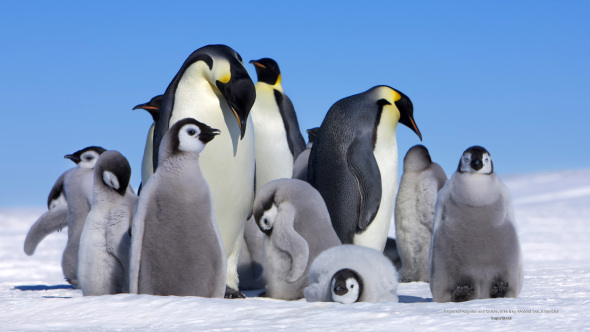 HUDDLING together in the white icy blustery winds of an Arctic storm and in temperatures of -50 its hard to fathom that any living creature would be able to survive for any length of time imaginable. HOWEVER - Warm and cuddled together the Aptenodytes forsteri makes a case of happy feet and Arctic traffic jams just to keep warm look like a breeze in the northern winds. Welcome to the Arctic Emperor Penguin a mysterious but cute and cuddly penguin.
HUDDLING together in the white icy blustery winds of an Arctic storm and in temperatures of -50 its hard to fathom that any living creature would be able to survive for any length of time imaginable. HOWEVER - Warm and cuddled together the Aptenodytes forsteri makes a case of happy feet and Arctic traffic jams just to keep warm look like a breeze in the northern winds. Welcome to the Arctic Emperor Penguin a mysterious but cute and cuddly penguin.
FOR most, the start stop motion of a traffic-jam is about as infuriating as it can get., but if you are a group of emperor penguins, its just what you need to stay together.
Emperor penguins huddle together in large groups to survive the Antarctic winter. Researchers interested in how these groups remain closely knit have attached temperature and light sensors to individual birds, but no one had looked at the dynamics of a huddle as a whole.
To see what was gong on Dr Wegener Institute for Polar and Marine Research in Bremerhaven, Germany, filmed huddles and analysed each penguins movements. They found that when one bird steps, it triggers the coordinated movement of its neighbors in a wave-like motion, similar to the ways cars inch forward in a congestion jam.
To find out what triggers these waves, the team applied a mathematical model often used to study and analyse road traffic congestion. It showed rather than simply being caused by cold penguins pushing in, waves can originate from birds at many different spots in the huddle., as long as their steps exceed a 2 centimeter threshold distance, about twice the thickness of their feather layer.
Waves that started in two different groups can merge, helping smaller huddles grow into large throngs that can withstand a shockingly low temperature of up to -50 oc.
Now that’s amazing.
Emperor Penguins are the largest species of Penguin listed as least concern on the IUCN red list of threatened species. They measure up to 1.1 m (3.5 ft) in height and they weigh up to 37 kgs (82 lbs). Their head and wings are black in colour, their back is blue-black and they are coloured white on their front. They have yellow patches on the side of their neck and their bill is purplish-pink.
The feathers of Emperor Penguins are thick, and provide insulation and a waterproof layer over their whole body, except their feet and undersides of their wings. Male Emperor Penguins have an abdominal fold between their legs and lower abdomen that is known as their “brood pouch”. This protects their egg and chick during the breeding season.
Emperor Penguins swim at speeds of 6 - 9 Km/hr (4 - 6 mph) but they can reach speeds of 19 km/hr (12 mph) in short bursts. The call of each Emperor Penguin is distinct and males and females can be identified by their differing calls. On land they alternate between walking and “tobogganing” along on their stomachs, propelling themselves with their feet and wings.
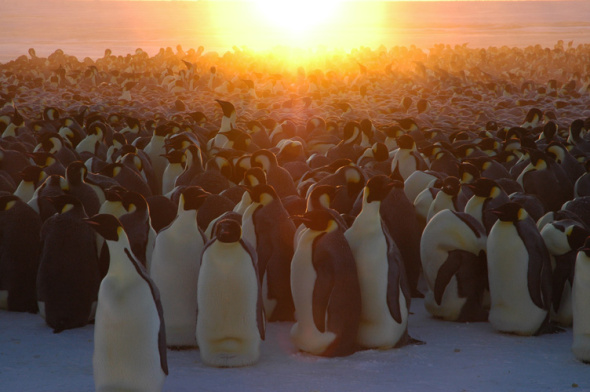 To protect themselves against the cold, severe weather Emperor Penguins huddle together in what is known as the “turtle formation”. The huddles can consist of 10 or hundreds of birds and each bird leans forward on a neighbour. Those on the outside shuffle slowly around the edge producing a churning action that gives each bird a turn in the middle.
To protect themselves against the cold, severe weather Emperor Penguins huddle together in what is known as the “turtle formation”. The huddles can consist of 10 or hundreds of birds and each bird leans forward on a neighbour. Those on the outside shuffle slowly around the edge producing a churning action that gives each bird a turn in the middle.
Habitat
Emperor Penguins are found circumpolar around Antarctica. They are social birds and they feed, travel and nest in groups. They are active during the day or night and from January to March they disperse into the ocean.
Diet
Emperor Penguins feed on small fish, squid and crustaceans. They mainly dive to around 50 m (164 ft) to forage for food and one of their feeding strategies is to blow bubbles into cracks in the ice to flush out any fish that may be hiding.
Breeding
Emperor Penguins breed in winter and will travel approximately 90 km (56 miles) inland to their breeding site. In May or June the female will lay 1 egg that weighs approximately 450g (1 lb) then she leaves it with the male while she goes out to sea to feed and build up her nutritional reserves.
The male carries the egg on his feet and protects it with a pouch of feathery skin. He incubates it for approximately 65 days and during this time he will not feed, surviving on the fat reserves he has built up. All the males huddle together to keep warm while they wait for their egg to hatch and the female to return.
In spring the female returns and the chick emerges from its egg. If the chick hatches before the female has returned with food, the male will produce a milky substance from a gland in his digestive system to feed the chick. After the female has returned the males then leave to go out to sea to feed, later returning to help rear the chick.
When the chicks are approximately 2 months old they will join other young penguins in a creche, but they are still fed by their parents. After approximately 5 months the young birds and their parents will return to the sea to feed for the rest of the summer.
Emperor Penguins become sexually mature at around 5 years of age. Those that are not of breeding age remain at the edge of the sea during the winter months, while the breeding adults make the trek inland.
Predators
The main predators of Emperor Penguins are leopard seals, killer whales, sharks, skua and antarctic giant petrels.
Subspecies
There are no subspecies of the Emperor Penguin.
Interesting Facts
Emperor Penguins can dive up to 530 m (1,750 ft) for as long as 20 minutes - they hold the record for the deepest and longest dive from a bird. It was believed that the endangered Spheniscus demersus - African penguin held this record however this is false, they are though one of the fastest penguin swimmers in the oceans to date.
Emperor Penguins are the 5th heaviest bird currently in existence and are the only penguins to breed during the winter months and they endure very severe breeding conditions. In the 2006 film Happy Feet, the main character was an Emperor Penguin called Mumble and he befriended a group of cuban-accented Adelie Penguins.
Emperor Penguins belong to the genus Aptenodytes, which also includes: - King Penguin - Aptenodytes patagonicus.
For more information on marine and Arctic environmentalism contact us at externalaffairs@international-animalrescue-foundation.org.uk
Alternatively visit our Marine Conservation Society Organisation here.
Rhino Wars - Update 2013.
THE MOON is high on the Savannah tonight, humid, a deep distance roar of a Lion and cubs can be heard in the distance possibly feeding on their latest catch of impala or onyx. Then out of nowhere a glistening silvery giant appears with something small and pudgy tagging along. A Rhinoceros cow and it’s calf - a stunning sight in the moonlight high grasses - silent and airy the two pass without noticing I am only a few meters away. The feeling of excitement passes through me with a mad rush of adrenalin - then out of nowhere loud gun shots crackle in the distance - my brief moment of joy and happiness at seeing Mother Nature’s 50 million year old species is shattered - brought to my senses once again knowing that I’m embedded and armed in poacher land. WELCOME to SOUTH AFRICA - Home to 90% of the worlds largest dwindling Rhinoceros population..
Several months have passed since I have documented on the African Rhino poaching - months that I and countless others have seen endless poached Rhino’s increasing to double that of last years number - a total of 928 Rhinoceros have been barbarically poached for their horns that are sold on the Asian black market for some $40,000 - $80,000 a Kilogram. 928 and still we have until the new year before the full years tally of dead Rhinos can be officially worked and documented on. Will we see the big 1,000 this year? Unlikely but then only last year one Rhino was poached every 11-15 hours. Now we are losing them faster than they can reproduce one to three a week and in some cases up to 15. We are no longer fighting a war on poaching - we are battling to keep Mother Natures species alive and secure. THE Battle is being lost.
Back in March at the Conference of Parties held in Bangkok -Thailand there was talk on legalizing the still banned Rhino horn trade or at least releasing some of the stock piled Rhino horns that are held in secure vaults in South Africa. Talk was cheap though. However since March Hon Edna Molewa has decided to buddie up with the hunter fraternity that compromises rangers, veterinary staff, and agriculturists many pro-trade lobbyists from which she will asking Cites signatories to allow the trade ban to be lifted in the hope this will generate income, flooding funds into conservation to preserve our ionic species. Hon Edna Molewa quoted that all efforts to preserve the Rhino have failed and that the banned horn trade must no longer be a hushed subject. Little does she care though of the last mistakes on the partial legalization of the ivory trade that resulted in much income yet lack of Elephant preservation.
Back in 2008 the first officially sanctioned ivory auction in nearly a decade happened in Namibia, with opinion split on whether the sale will help or hurt efforts to stop elephant poaching.
The Namibian government sold almost eight tons of ivory for $1.2 million. Further to this China being the main buyer with Japan last then sold on that ivory to Asian buyers for ten times the price they purchased disgruntling buyers thus increasing poaching. South Africa, Mozambique and Zimbabwe followed suite and sold on their non-poached ivory again all sold on to mainly Chinese citizens at ten times the price via the Chinese government.
The sales supposedly helped in Namibia, for example, some of the money was spent in communities that have problems with elephants destroying crops or killing people. Did it actually stop poaching though and kill trade within Asia? No it did not. Did ANY funding actually go into Anti Poaching that year from which, yes, there was a slight decrease in Elephant poaching - this question seems to keep popping up now frequently due to the high amount of poached mega fauna and low conviction rates. However, no sooner after the sales of white gold - Elephant poaching skyrocketed. Are we really prepared to make the same mistake again? and if we do will poaching really rage out of control killing all Rhino - then seeing poachers turn on the last of the mega beasts - Elephants and Lions.
Over 35,000 Elephants have been lost since this second one of trade with the first in 1999 approved by the Convention on International Trade in Endangered Species of Wild Flora and Fauna. The African government seem to be forgetting exactly what “one of” truly means -
Dictionary entry overview: What does one-off mean?
• ONE-OFF (noun)
The noun ONE-OFF has 1 sense:
1. a happening that occurs only once and is not repeated
Familiarity information: ONE-OFF used as a noun is very rare. Are these “one off sales rare” no they are not, are they a one off?
Since 2000 we have lost a nauseating 2,704 Rhinoceros all to poaching. The highest peaks that we have seen were back in 2002 - 2003 - 2005 - 2006 - then came the real increase that saw some 83 poached for 2008, 122 poached 2009, 2010 skyrocketed to 333, with 448 for 2011 and over 445 just for the month of October in 2012. 2012 we lost over 668 Rhinoceros. December 18th 2013 and we are sat at 930 poached. The humble Rhinoceros cannot keep up with reproducing with this mass surge in poaching and at every angle.
Arrests have shot up all being mainly African poachers from the nations of Zimbabwe and Mozambique however we see little convictions and mainly bailed not jailed poachers that are free to roam back over the border in to their native lands. 2010 saw 140 arrested - 2011 saw 267 arrested - 2012 saw 232 arrested and for the year of 2013 we have a non-concluded arrest rate of just over 190 arrested. Roughly 829 poachers have been captured - 90% of them have not even been prosecuted or even seen a jail house. Yet Hon Edna Molewa and the DEA Deputy Minister brags this is good news. Whats good news about poachers roaming back over the border just to take out another Rhino one dares ask?
Edna Molewa and I quote stated “All avenues must be exhausted before we even go down the route of de-horning our Rhinos”. The Department of Environmental Affairs (DEA) has though forgotten what she stated (2013) and as explained will be approaching the Convention on International Trade in Endangered Species of Wild Flora and Fauna in 2016 to call for the ban on Rhino horn trade to be lifted.
All avenues have not been explored nor even “exhausted” as one such method of preserving our humble species is that of the Rhino Rescue Projects - horn treatment program that has seen outstanding results with only one Rhino dying. That single male bull sadly died from complications caused by sedating and old age. Fortunately the RRP has progressed from this, learnt and have successfully with no Rhinos dying treated the horns of many farmed and wild Rhinoceros. Whereas those that have been de-horned - have sadly still be poached.
On 20 December 2012, AFB Hoedspruit conducted the DNA sampling and Chemical Treatment of Rhinoceros Horns. AFB Hoedspruit was assisted by Lt Col Phillip Oosthuizen who initiated the project, Protract, Rhino Rescue Project who sponsored the treatment, the Green Kids, the Department of Environmental Affairs, the Veterinary Doctor Dr Van Niekerk and the Directorate Animal Health SAMHS.
During the last two months Five Rhinos have been poached and killed at Umhlametsi Private Nature Reserve on the farm Boston (North) adjacent to AFB Hoedspruit. In addition, prior to this there were recently three incidents of the breaching of security and an attempt to track and kill rhinos on Suikerkop (AFB Hoedspruit Buffer zone). This obviously calls for desperate measures to proactively implement strategies in order to safeguard the rhino population at AFB Hoedspruit.
TOPS Regulation Section 27 dd refers. The mentioned legislation necessitates that all rhinos in South Africa be micro chipped and included into a National database. Currently there are only two units within the SANDF that possesses white rhino populations.
AFB Hoedspruit also investigated the various options of safeguarding the rhinos and acknowledges the responsibility with regards to the sound management of this species. Various security aspects were addressed and frequent patrols and informal exercises are carried out on an adhoc basis to discourage and prevent potential killing or poaching of these animals. As there are very little additional options, AFB Hoedspruit proposed that the horns of all the SA Air Force (SAAF) rhinos be treated rather than dehorned in order to endeavor and stop any further attempts to kill these magnificent animals.
The horn treatment strategy as opposed to the dehorning of the rhino has the following advantages:
- Durability
- Longer lasting (3-4 years as opposed to 1 year when dehorned)
- Visible internally when used with dye
- Horn becomes redundant and unusable when treated
- Proactive if made well known (signs, publicity etc)
- To date – no killing/poaching of rhinos with treated horns
When the rhino is temporarily immobilized for treatment DNA sampling is conducted to ensure sound management of this precious species in the SAAF. Although there are normally significant costs involved in such project, AFB Hoedspruit liaised with other researchers working on different challenges affecting rhino population and engaged with Dr Lorinda Hern from the Rhino Rescue Project who approved and supported this project and gave their consent to conduct such program free of charge on both the SA Air Force (SAAF) units who owns rhino’s.
The idea of poisoning the horns was circumvented by the need to treat the horn. The treatment of the horns with a mixture of ectoparasitacides coupled with an indelible dye would go a long way to helping achieve the goal of protecting rhinos from poaching. It is also believed that the treatment could potentially neutralize a dual threat of rampant poaching and reduce the cruel reality of poaching.
In the ongoing war against rhino poaching, a holistic and multi-pronged approach is necessary to contribute significantly to reducing the poaching scourge and deter the poachers. 19 Squadron supplied a helicopter to spot the rhinos, then the veterinarian darted the rhinos. The ground crew and veterinary team of experts stabilized the rhinos after the treatment.
The Green Kids Initiative (GKI) consisting of school children from rural areas assist to raise awareness about rhino poaching provides environmental education for schools, encourage sustainable environmental living practices and help to create environmental consciousness in communities.
Why does International Animal Rescue Africa support this approach for ? We support it because it works and has stopped any such poaching incident occurring. de-horned Rhino though are still being poached even for a six inch stub. The problems that we are seeing now with de-horned Rhinos are that poachers will not just take the one Rhino down - but two or even three as this way they can abscond with at least an entire horn although not intact.
Rhino Rescue Project’s horn treatment program can be viewed here - What do you support - De-horning that will only see more Rhino poached - or horn treatment that has not seen (any Rhinoceros poached) since it began?.
SO do we support de-horning and give it a try knowing that the Rhino population is now in serious status decline? International Animal Rescue Foundation.org.uk and Speak Up For The Voiceless.org does not under any circumstance support de-horning nor do we acknowledge any so called benefits from the de-horning process. Why though? Whats the big issue and why do we not support the lifting of the still banned trade?
- Legalized trade control of narcotics has proven countless times to be a complete failure - Marijuana for example when legalized saw sellers taking control of the market. Trade spiraled out of control on two separate occasions from which the trade was made “illegal again” as the market could not be controlled.
- The sales of ivory tusk from Botswana, Mozambique and South Africa to Asia was a complete disaster. Asian governments sold the ivory on at ten times the price they paid - thus disgruntling buyers pushing them to purchase off black market traders = more Elephants poached.
- De-horning the Rhino can/will have devastating impacts on photography tourism and tourism as a whole. Who wants to visit the BIG 5 and a 1/2? Tourism is the bread winner of South Africa making some $1.79 billion in 2010 alone.
- De-horned Rhinos have been poached from 2010-2013 and as they still contain a six inch stub the likely chance that poachers will kill more Rhino in one go is incredibly high.
- Vietnam - China and Mozambique have FAILED to curb poaching, illegal trade, and do not take poaching/ animal abuse seriously.
- The illegal trade cannot be controlled - How is one even going to control a legal trade?
23rd May 2013 Mr John and Albina Hume’s farm of “de-horned” Rhinos was tragically hit for a third time by poachers. Poachers again struck Mr Hume’s farm and hunting ranch that contain more de-horned Rhino than any other farm in South Africa and a staggering high number of black Rhino.
Three rhino bulls were poached on John Hume’s ranch in the North West Province. A fourth bull was wounded and is still being treated for a gunshot wound to the knee.
Madame Albina Hume quoted the following;
“Yesterday we woke up to a nightmare! For the first time in 5 years four of our rhino bulls were shot by poachers. Three of them were killed and butchered for their stumps of horns; one has survived with his injuries. The poachers escaped and will probably never be found.
Heartbreak! The same question keeps playing in my mind – how many more rhinos have to die for their horns before we realize that there is a demand for rhino horn but NOT for rhino life!??
We know that the demand for rhino horn is there and it will not go away. We also know that it can be met without killing rhinos, because rhino horn is a sustainable renewable product (like vicuna wool).
If we don’t address this century-old demand we have to face the fact that rhinos will become extinct, because we are losing the war against poachers who are an invisible enemy!”
Albina Hume stated that Rhino horn is sustainable, this is factual to a degree. Rhinos can only be de-horned 4-5 times though within their lifetime, so in reality it is not a sustainable source and with 90% of Rhino horn actually “fake” in using countries such as Laos and Vietnam feeding the demand is simply not going to happen. 40% of people within Vietnam for example actually use Rhino horn as a medicinal fake medicine and status symbol. To-date there is a total (unsupported by census) 18,800 Rhino within South Africa being the largest holding country. 6,834,942+ people live within Laos (2009 survey) half of which use Rhino horn. The problems though within Laos, Hanoi - Vietnam is 90% of horn is fake. Please view the video below;
SO whilst we know that 90% of horn is fake, Rhinos can only be de-horned on average 4-5 times in a lifetime, with a total of only 18,000+ Rhinos within South Africa then how on earth is Rhino horn even going to sustain the using population of Laos for instance? We would need millions of Rhino to even sustain the trade in Vietnam, China and Thailand and whilst poaching is rampant with no end in sight and Rhinos now on the near decline - chances of this happening is slim. Further to this China and Vietnam have signed the MOU - Memorandum of Understanding there still has been no decline in illegal trade. China-Vietnam and Mozambique have done little to quell the illegal trade in their countries from which make Hon Edna Molewa approach to the Convention on International Trade in Endangered Species of Wild Flora and Fauna a complete waste of time. What the DEA should be supporting and funding now - Rhino horn treatment program. Lastly but not least International Animal Rescue Foundation has been lobbying for the Trans-frontier fence to be re-erected that would preserve many Rhino within the (KNP) - Kruger National Park.
The Trans-frontier fence was cut back in 2002 - Since then from 2002- 2006-2007- and 2008 poaching skyrocketed as the fence that kept the KNP (Kruger National Park) secure at a whopping 219 miles was cut in three sections opening the doors for poachers to roam in freely- Rhino horn village has since been born. Lets not forget too that the Vietnam Education Minister stated to his citizens that he had been cured of bowel cancer from the usage of Rhino horn. (No evidence has proven this to ever be factual and medical studies have shown countless times that Rhino horn does not have any form of medical properties). Evidence and investigations past and present have proved countless times that since the trans-frontier fence was taken down in three sections - Rhino poaching increased from 2002 - 2013, with criminals knowing too that the horn is a valuable commodity and can purchase more sinister items such as illegal arms - this illegal trade has been openly exploited.
Please sign the petition listed hereto that is addressed to the DEA Minister, Cites CEO, and Mozambique Trade and Tourism Minister - Please continue to sign the petitions listed below too.
Sign here;
1. http://www.change.org/petitions/stop-rhino-poaching-in-south-african-now
2. http://www.change.org/petitions/rhinoceros-in-south-africa-need-your-help-before-their-extinction
3. http://www.change.org/en-GB/petitions/south-african-government-put-a-stop-to-the-poaching-of-rhino-s-in-south-africa
4. http://www.change.org/petitions/support-anti-poaching-efforts-for-rhinos
5. http://www.change.org/petitions/south-african-minister-of-water-and-environmental-affairs-bomo-edna-molewa-create-laws-againt-poaching-to-protect-wildlife
6. http://www.change.org/en-GB/petitions/president-jacob-zuma-re-erect-the-fence-along-the-border-of-the-kruger-park-and-mozambique [Scroll up to view#internationalanimalrescuefoundation petition on this area too] - view here https://www.facebook.com/photo.php?fbid=493424754070767&set=a.204117543001491.53024.199685603444685&type=1&theater
7. 100,000 IS NEEDED AND FAST - HURRY -http://www.change.org/petitions/say-no-to-c-i-t-e-s-lifting-the-ban-on-rhino-horn-trade
8. http://www.change.org/petitions/president-zuma-of-south
africa-please-send-more-military-into-national-parks-to-protect-wildlife-from-poachers
9. http://www.change.org/petitions/president-of-kenya-please-declare-poaching-a-national-disaster
10. http://forcechange.com/72737/stop-african-poachers-from-slaughtering-wildlife/
11. http://forcechange.com/69254/make-rhino-poaching-a-felony-in-mozambique/
12. http://forcechange.com/39768/stop-the-poaching-of-south-african-rhinos/
13. http://forcechange.com/31636/end-misconception-of-rhino-horn-benefits-in-vietnam/
14. http://forcechange.com/15195/end-the-poaching-and-smuggling-of-rhino-horns/
15. http://forcechange.com/14676/help-end-rhino-poaching-in-south-africa/
16. http://forcechange.com/8848/invest-more-resources-towards-rhinoceros-conservation/
17. http://forcechange.com/6041/stop-south-africa-from-legalizing-rhino-horn-trade/
18. http://www.avaaz.org/en/petition/SAY_NO_TO_LEGALIZING_TRADE_IN_RHINO_HORN/
General media information;
http://www.telegraph.co.uk/earth/wildlife/8935724/Deadly-trade-rhino-horn-poaching-surges.html
http://www.telegraph.co.uk/travel/travelnews/9216136/Rhino-poached-at-refuge-where-Prince-William-proposed.html
THE FACTS;
The demand for rhino horn comes predominantly from Asia where it is used as a traditional Chinese medicine that supposedly cures cancer, hangovers, and is used as an aphrodisiac
93% of the world’s rhino population is in South Africa
2 ½ rhinos are killed every day
In 2008 83 rhinos were killed. This year in 2013 an estimated 1000 rhinos will be killed.
There were 20,160 wild white rhino and 4,880 wild black rhino at the start of 2011
Despite the good intentions of saving a rhino from being poached by removing its horn, the rhino is often killed anyway. Poachers do this to prevent having to track the rhino again in the future.
Many poachers have bad shots and use old ammunition, which means that the rhinos do not die right away and are alive when their horns are brutally hacked off with pangas and axes.
People on the demand-side believe that the serum secreted from the base of the horn has increased potency and powers. Therefore, many poachers will hack the the entire face off of the rhino while the animal is still alive to ensure that they get the entire horn as well as this serum as it is worth more.
Many farms are removing their rhinos horns as a safety precaution. While this does help a bit, the chunk of horn left in the rhinos head is still valuable and poachers will kill the rhino even for this small amount.
Poaching takes place across boundaries.
No organization or governmental body keeps a central database of statistics relevant to the region.
Flourishing illegal wild animals markets in SA is compounded by geographical location and relatively sophisticated infrastructure.
Poaching is taking place in an increasingly organized scale. Money is the driving force behind the trade; motivated by greed and aided by corruption, also inadequate ranger staffing, public and state attitudes to wildlife, lack of public awareness, lack of data, and lack of adequate law enforcement.
The media only reports rhino deaths from poaching, but many rhinos are killed and injured due to collateral damage over and above this. Fore example fatal aggression is increasing in male rhinos due to stress.
Read more here
Updates will follow
Chameleon war paint.
Order: Squamata
Family: Chamaeleonidae
Genus/species: Chamaeleo calyptratus
FOR chameleons,war paint isn’t just an accessory, it is a battle flag. The brightness of colors these lizards display and how rapidly they change are good indicators of which animal will win in a fight.
Chameleons are famous for changing color to hide from predators by blending into their surroundings, but they also use color for social communication. To see how this applies to combat, Russel Ligon, a behavioral ecologist at Arizona State University in Temple, pitted 10 adult male veiled chameleons. One of the most diverse colored species, against each other.
He used a high speed camera to capture the color changes from 28 points on each animal, taking into account how the colors would look to a chameleons eye - they can see in ultra violet.
Males with the brightest side stripes were more likely to instigate a fight, whereas those with brighter heads that changed color most rapidly were more likely to win.
This suggests that different colors and patterns may signal different aspects of competitive behavior - how motivated the chameleon is verses its strength.
Early in an aggressive interaction, signaling a willingness to fight by showing bright side stripes could stop a less motivated lizard from approaching, says Ligon.
If both want to continue, however, the last chance to size up an adversary would be to look at the pattern on its head.
DESCRIPTION
Veiled chameleons are one of about 80 species of Old World chameleons, also called true chameleons. They are aggressive and brightly colored. They have a casque, a helmet-like ridge, on top of their heads, which is a tiny swelling as a hatchling, but grows to two inches (5 cm) in height as the animal matures. As hatchlings, they are usually a pastel green, but as they mature they acquire bold bands of bright gold, green, and blue, mixed with yellow, orange, or black, that circle their body. The males are usually more strikingly colored than the females, which are usually shades of green mottled with shades of tan, orange, white, and sometimes yellow.
There is marked sexual dimorphism. Males have a larger body and casque when mature than females. Male body length can reach between 17 and 24 inches (43 to 61 cm) from head to the tip of the tail and they are usually thin in appearance. Females reach between 10 and 14 inches (25 to 35.5 cm) in length. The female’s casque is smaller than the males, and they are more heavy-bodied.
A SPECIALIZED LIZARD
Chameleons are specialized tree-living lizards that catching insect prey. Their bodies are flattened from side to side, and more or less leaf-shaped. They remain still and concealed for long periods of time and wait for their prey to come near. When they move, they do so slowly, and rock their bodies from side to side like a leaf in the wind.
EYES
They have eyes that can move independently and look in two directions at once, as well as swivel nearly 180 degrees. They are therefore able to look in any direction, and even follow moving objects, without turning their heads or shifting body position. When a prey animal is spotted, both eyes will focus on the insect in order to perceive depth.
HANDS AND TAIL
Chameleons are highly arboreal (tree-living). They have grasping hands that work much like human hands. Three fingers are fused together and face toward the inside. They also have a prehensile tail that they use as a fifth appendage.
COLOR CHANGES
Chameleons are famous for their ability to change color. The color change serves only partly for camouflage. Although chameleons at rest tend to assume colors similar to their surroundings, color change is most often used to signify emotional state. Many chameleons are some shade of green or brown at rest, but can become far more brightly colored when frightened, courting, or defending a territory against another chameleon. Veiled chameleons when startled or threatened may darken in color and “play possum.”
INTERACTION WITH MATES
They are primarily solitary and males are very territorial. Males and females tolerate each other only during breeding.
DISTRIBUTION AND HABITAT
Veiled chameleons are native to Yemen and southern Saudi Arabia, and reside in an amazing variety of different habitats. They can be found in the dry plateaus, mountains, and river valleys. They are arboreal, preferring to live in trees, bushes, or shrubs. They prefer temperatures of 75° to 95°F (24° to 35°C) and can be found in elevations up to 3,000 feet (914 m).
DIET IN THE WILD
The veiled chameleon is an insectivore. It may also eat leaves as a source of water during the dry seasons.
ZOO DIET
Crickets
REPRODUCTION
They reach sexual maturity within four to five months, at 8 to 12 inches long. Breeding may occur up to three times a year. Females change colors within 18 hours of a successful mating. Egg laying occurs between 20 and 30 days after mating, with clutch sizes ranging from 35 to 85 eggs. The white, oval, tough-skinned eggs are buried in warm sand.
LIFE SPAN
The lifespan of a veiled chameleon may be up to five years for females and up to eight years for males.
STATUS
They are not listed on the IUCN Red List of Threatened Species. The veiled chameleon is the most commonly bred and available species of its genus in the pet trade. The popularity of the veiled chameleon is due to a number of factors. Veiled chameleons are relatively hardy, large, beautiful, and prolific. Because they are found in a variety of habitats naturally, this species is tolerant of temperature and humidity extremes, which contributes to its hardiness in captivity.
However, wild chameleons are sold for rituals and souvenirs. For example, some believe that throwing a live chameleon into a fire will bring good luck. The growing demand by tourists for chameleon “souvenirs” puts pressure on chameleon populations.
Like those of many other animals, wild chameleon populations are experiencing pressures from commercial exploitation and extensive habitat loss. Chameleon populations are particularly sensitive to the problems associated with habitat loss because many chameleon populations have evolved in small, often isolated pockets and are unable to relocate.
FUN FACTS
They are probably best known for their long, sticky tongues that they use to catch prey. The tongue can be more than 1.5 times the length of their body. They “shoot” their prey with a tongue that can be projected in the blink of an eye.
For further information on nature and environment please email us at;
info@international-animalrescue-foundation.org.uk
https://www.facebook.com/pages/The-Private-Life-of-Mother-Nature/320571984651857
Please support our Say No To Rhino Horn Campaign here;
Koala woo woo.
 Koalas are the Barry Whites of the animal world.Their seduction song sounds more like a serious of burps and snores than the delicate tones of the soul maestro, but its pitch is about 20 times deeper than expected for the animal’s size.
Koalas are the Barry Whites of the animal world.Their seduction song sounds more like a serious of burps and snores than the delicate tones of the soul maestro, but its pitch is about 20 times deeper than expected for the animal’s size.
Now we know how they produce it. Koalas make most of their noises by vibrating the centimeter thick folds of their larynx but when examinations took place of the throats of ten dead Koalas found was a hitherto unknown pair of large fleshy flaps above the larynx.
By sucking air in via the nose and sending it out between the folds, reproductions of the deep snores of frisky males was heard. The folds are three times as long as those in the larynx itself and 700 times heavier, so they oscillate at lower frequencies when male Kolas inhale.
Toothed whales are the only other mammals with a sound-producing organ independent of the larynx: they make clicks using the phonic lips inside their heads.
The Koala is the only member of the Phascolarctidae family. The Koala’s scientific name Phascolarctos cinereus means ‘ash-coloured pouched bear’.
Some people refer to the Koala as a Koala Bear. Although it looks like a small bear, the Koala is a marsupial mammal.
Female marsupials have pouches to carry their babies. Other marsupials include kangaroos, wallabies, wombats, possums, and opossums. The Koala’s closest relative is the wombat. In Aboriginal language, the word Koala is thought to mean ‘does not drink’.
Koalas have soft, wool-like grey fur, which is paler on their undersides. They have patches of white on their stomachs, chests and chins and a fringe of white around their ears. They have a large, round head with large, round, furry ears, a large nose and long strong limbs with sharp claws. They have a small tail, hidden by their fur.
A Koala’s front and rear paws each have five digits with sharp claws. Their hands have two opposable thumbs, much like a human’s thumb, and three fingers, which help them with climbing and gripping tree branches. Two toes on their rear feet are joined together to form a ‘grooming claw’ useful for removing tics and combing their fur. The big toe doesn’t have a claw.
Koalas vary in size and colour depending on where they live in Australia. Koalas living in the southern parts have adapted to the colder climate. They are larger and have thicker, grey coloured fur. Koalas from the warmer northern areas are more a browny colour and smaller.
Koalas reach a maximum length of about 24 – 34 inches (60 – 85cm). An adult male koala can weigh between 17 – 30 pounds ( 8-14 kilograms) and a female between 13 – 25 pounds (6 - 11 kilograms). They have a life span of between 12 and 15 years.
Habitat
Koalas are found along the eastern coast of Australia, from the Atherton Tableland west of Cairns in Queensland, down through New South Wales, Victoria and South Australia . They also live on islands off the coast of Queensland, Victoria and South Australia.
Their habitats range from tall eucalypt forests and low woodlands inland, to coastal island trees.
Diet
Koalas eat only leaves and bark from eucalyptus trees. There are over 600 types, or species of these trees, but Koalas only eat the leaves and bark from 12 of them.
Eucalyptus leaves are extremely poisonous to most animals but the Koala’s digestive system detoxifies the poison. Each Koala eats approximately 12 – 21 ounces (350 to 600 grams) of leaves a day. They prefer the ‘tip’ of the leaves, which is the juiciest and softest part of the leaf.
Koalas receive over 90% of their fluid intake from the Eucalyptus leaves. They only drink water when they are ill or when there is not enough moisture in the leaves.
Habits
Koals are mostly nocturnal. They spend up to 20 hours a day sleeping or resting in trees, curled up gripping the limbs with their feet. When they move around, they can leap from tree to tree as well as travelling longer distances on the ground. They walk with a slow akward gait, moving very slowly, but they can break into a run if threatened.
When travelling on the ground, they can be attacked by predators such as dogs, foxes and dingoes and they are also at risk of injury or death from cars.
Koalas are very territorial and live in stable breeding groups. Each animal has its own ‘home trees’, and the area covered by these trees is called the koala’s ‘home range’. The size of each home range depends upon the sex, age and social position of the animal within the group. Koalas do not normally visit each other’s home trees, except for breeding.
Koalas are generally silent but can communicate with a wide variety of sounds including growls, grunts and a load bellow. The mating call of the male koalas can be heard for long distances during breeding season.
Biology
The Koala’s very large nose is one of its most important features. It has a very highly developed sense of smell, which helps the animal tell what eucalyptus leaves are safe to eat.
Koalas have a very low metabolism, which conserves energy and helps with digestion of the fiborous eucalyptus leaves. They feed at any time of day, but usually in the cool of the night to conserve energy and moisture.
Eucalyptus leaves are poisonous to most animal and are not high in nutrients. Koalas have a special bacteria in their stomachs that breaks down the toxins in the eucalyptus oil. Koalas chew the eucalyptus leaves to a very fine paste before swallowing. Their hind gut (the caecum) is enlarged and contains bacteria which ferments the leaves and extract the maximum amount of nutrient from them.
Breeding
A baby Koala is called a joey. Koalas breed once a year between December and March (the Southern Hemisphere’s summer) and give birth to only one baby at a time. Gestation is 35 days. At birth, the joey is very small, about the size of a jelly bean. It measures less than 30 millimeteres in length and weighs less than 1 gram. It has no ears or hair, and it can’t see.
As soon as the joey is born, it makes a long journey, crawling across its mother’s fur and into the pouch on her belly. A female koala’s pouch opens near the bottom instead of at the top like a kangaroo pouch. The baby Koala attaches itself to one of two teats inside the pouch and the mother’s powerful muscles hold the joey so it can’t fall out. It stays hidden there for about six months, feeding on milk. During this time the joey grows ears, eyes and fur.
At about 30 weeks, when the joey is ready to be weaned, the mother produces a special faeces from her anus called “Pap” which the joey licks from her fur. This is similar to a human baby being fed mushy food before going on to solids. The Pap is high in nutrients and micro-organisms from the mother’s own digestive system and helps the baby koala to begin to digest eucalyptus leaves.
The joey leans out of the pouch to look around, and then starts to explore outside. It stays with its mother for another six months or so, riding on her back, and feeding on both milk and gum leaves. Weaning is complete at about 12 months of age and after this, Koalas gradually become independent and survive on their own.
Protecting the Koala
Once there were millions of Koalas, but in the early 20th century the animal was hunted almost to extinction. In the 1920s nearly eight million koalas were killed, largely for their fur.
Koalas require large areas of healthy forests that are connected together, and they will travel long distances along tree corridors in search of new territories and mates. When their habitats are destroyed, they have to travel further and more often. They also have to move along the ground more often, and so are at greater risk from predators and humans.
The most common causes of koala deaths are dog attacks and motor vehicle accidents. In recent years some colonies of koals have been hard hit by disease.
There are now many conservation and research programs to help protect the Koala and its habitat.

